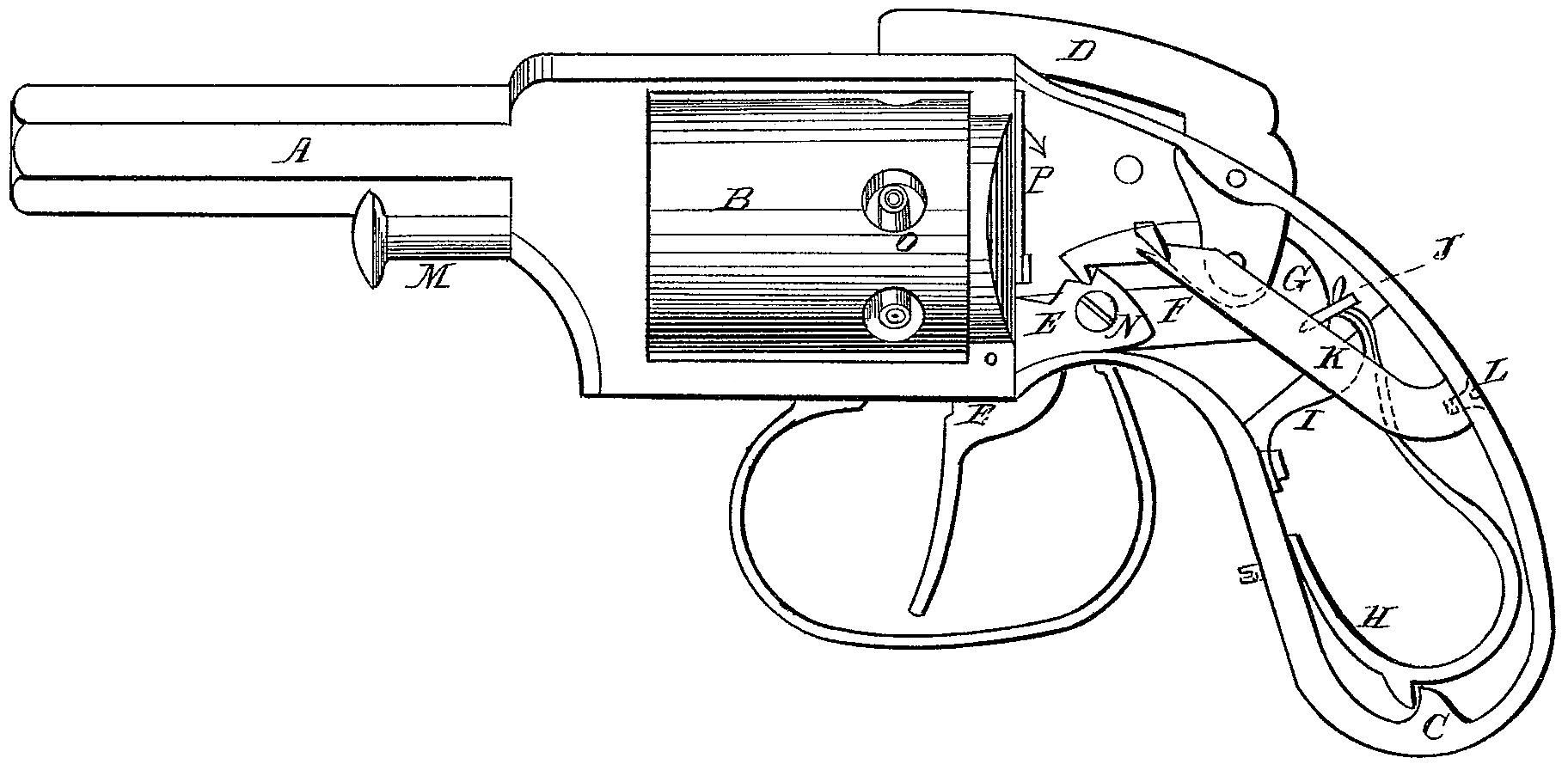US 34032
UNITED STATES PATENT OFFICE.
THOMAS SHAW, OF PHILADELPHIA, PENNSYLVANIA, ASSIGNOR TO HIMSELF AND B. HART, OF SAME PLACE.
IMPROVEMENT IN REVOLVING FIRE-ARMS.
specification forming part of Letters Patent No. 34,032, dated December 24, 1861.
To all whom it may concern:
Be it known that I, Thomas Shaw, of the city and county of Philadelphia, Pennsylvania, have invented a new and Improved Mode of Half-Cocking Self-Cocking Pistols; and I hereby declare the following to be a full, clear, and exact description of the same, reference being had to the accompanying drawing, and to the letters of reference marked thereon.
My invention consists in adapting a piece of metal to the pawl of the hammer, as hereinafter described.
In order to enable others to practice my invention, I will proceed to describe its construction and operation.
On reference to the accompanying drawing, which forms a part of the specification, letters A B C represent the barrel, chambers, and handle,respectively, of an ordinary self-cocking pistol, with the sides of the handle removed in order to expose the internal construction of the same, of which E is the trigger, and D the hammer, and G a pawl communicating between the same, the mainspring connected with said pawl G by the stirrup J for the purpose of pulling forcibly down the hammer D upon the cap, and also to replace the trigger E. after firing.
I is a spring pressing on the rear end of pawl F, the opposite end of which fits into notches and revolves the cylinder B, when caused to rise, by pulling the trigger. Said trigger is connected with said pawl by means of screw N playing in a slot in pawl F.
P is a spring-catch, the point of which fits into notches on the back end of chamber B for the purpose of holding said chamber in position with the nipples O immediately under the hammer.
M is a pin to be withdrawn when removing the chamber B; K, a piece of steel or arm connected to the pistol by means of a screw at L, the other end of which locks into the projection or lug t on pawl G, the effect of which is to keep the hammer D off of the cap, and thus prevent any explosion by accident; and, further, to permit the firing of the pistol by the action of the trigger E alone.
It will be observed that when the pistol is fired the projection t on pawl G is sufficiently elevated above the arm K as not to be caught by the same, save after pulling the trigger.
It will be evident that the piece of steel or arm K can be attached to other parts of the pistol than at L, and when combined with the pawl G effects the same object.
What I claim, and desire to secure by Letters Patent, is—
The combination of the pawl G with the arm K, substantially as described, and for the purpose set forth.
THOMAS SHAW. [L. S.]
Witnesses:
Samuel Johnson,
Hugh Clark.

